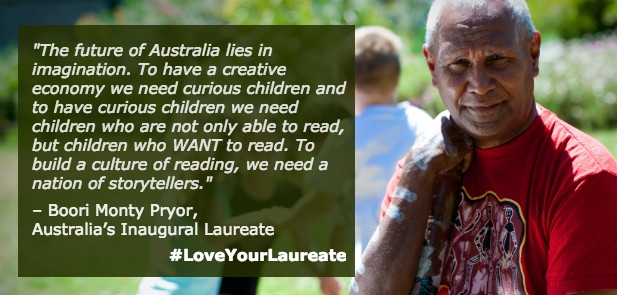AustLit
-
This module is based on a the short film featuring Kungganji and Birrigubba author Boori Pryor.
See the record for Brown Paper Bag
See Boori Pryor BlackWords record.
The BlackWords team workshopped this idea with participants in the Queensland Education Department's Solid Pathways project (a group of deadly young people excelling at school) who were aged 10-12.
In this workshop, the students asked themselves what they themselves have in their Brown Paper Bag to keep their culture strong.
-
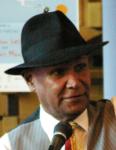 See full AustLit entry
See full AustLit entryBoori Pryor is a descendant of the Kungganji and Birri-Gubba people of North Queensland. Boori has worked in the film and television industry and also theatre-in-education. He is best-known as a storyteller, travelling widely to introduce his culture to young Australians.
In collaboration with Meme McDonald, he has published a series of books based on his life and the stories of his family. Their first collaboration, Maybe Tomorrow (1998), received a Special Commendation from the Human Rights Awards and their second, My Girragundji (1998), won a Children's Book Council of Australia Award.
-
 See full AustLit entry
See full AustLit entry'A cheeky principal and a master storyteller help a young Indigenous boy uncover the world of reading.'
Source: Youthworx.
(...more) -
Students watch the short film Brown Paper Bag.
Students are provided with brown paper bags containing:
o A book cover relating to a writer included in BlackWords.
o An excerpt from one of the stories published in the Growing Up Indigenous collection on BlackWords.
o A set of questions that they will use to search BlackWords. Things like discover the author’s biography, cultural affiliation, how many works have they published, how many awards, find works on particular subjects… etc. Question examples are below.
Students then have a choice to:
o write a story that responds to Boori Pryor's Brown Paper Bag with the questions… “What would be in your brown paper bag that relates to your aspirations and hopes for the future?”
o write a "growing up" story, similar to authors in AustLit or related to the themes found in their brown paper bags.
The Invitation:
"Inside your ‘Brown Paper Bag’ are treasures and stories waiting to be told. We invite you to open it carefully, find your questions, and let them take you wherever you wish to go."
Preparation:
Teachers can print questions and book covers from the images contained within AustLit records of each of the books. Many of these books have teaching notes to explore and begin a more in depth study. Here is a link to bibliographical records of works published since 2000 that include teaching resources.
This activity can be used to encourage reading in students and begin the conversation around places of belonging, interests and passions, and building relationships between students and educators for life-long learning.
-
Let’s start exploring BlackWords!
Look at your book title and find it in: BlackWords
1. Where is the author from? Where were they born? When were they born?
2. Which country or countries (Aboriginal or Torres Strait Island) does the author say they belong to?
3. What awards has the author or the book won?
4. What is the book about? Can you tell from the abstract or the subjects on the bibliographic record?
-
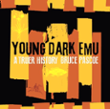 Image courtesy of publisher's website.See full AustLit entry
Image courtesy of publisher's website.See full AustLit entry'Bruce Pascoe has collected a swathe of literary awards for Dark Emu and now he has brought together the research and compelling first person accounts in a book for younger readers. Using the accounts of early European explorers, colonists and farmers, Bruce Pascoe compellingly argues for a reconsideration of the hunter-gatherer label for pre-colonial Aboriginal Australians. He allows the reader to see Australia as it was before Europeans arrived – a land of cultivated farming areas, productive fisheries, permanent homes, and an understanding of the environment and its natural resources that supported thriving villages across the continent.
(...more)Q. What is the full title of the adult work related to “Young Dark Emu?”
Q. What is Bruce Pascoe trying to get Australians to think about?
-
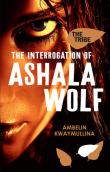 Image coutesy of Walker BooksSee full AustLit entry
Image coutesy of Walker BooksSee full AustLit entry'The Reckoning destroyed civilisation and humanity has had to rise from the ashes. But there are now people with abilities - Flyers, Firestarters, Rumblers - and society is scared of them. The government calls them Illegals. Ashala Wolf protects a group of Illegals. They hide together in the Firstwood and she'll do anything to keep them safe. When Ashala is captured, she realises she has been betrayed by someone she trusted. Now she only has herself. But when Neville starts digging in her memories for information, she doubts she can protect her people forever.
(...more)Q. What is the genre of this book?
Q. Name the types of abilities the characters have.
-
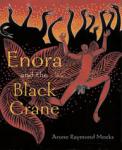 Courtesy of Magabala Books.'How birds get their colours and how Enora became the black crane.' (Libraries Australia record). (...more)See full AustLit entry
Courtesy of Magabala Books.'How birds get their colours and how Enora became the black crane.' (Libraries Australia record). (...more)See full AustLit entryQ. What other language/s has ‘Enora and the Black Crane’ been translated into?
Q. Name some of the foreign countries this author has studied and exhibited/showcased his artworks.
-
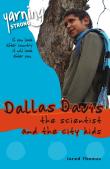 Cover image courtesy of publisher.See full AustLit entry
Cover image courtesy of publisher.See full AustLit entryDallas is angry when he has to visit his family’s land instead of going to the footy. Then he learns just how important his knowledge of country is … (Publishers website)
(...more)Q. What did Jared Thomas study at University?
Q. Which University did he attend?
-
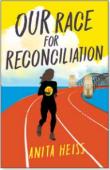 Image courtesy of publisher's website.See full AustLit entry
Image courtesy of publisher's website.See full AustLit entry'Mel Gordon loves running, and watching Seinfeld, but mostly she loves Cathy Freeman. It's 2000 and the Olympics are going to be held in Australia. In a year of surprises, Mel finds out that Cathy Freeman is coming to talk to her school. And her family is heading to Sydney! It becomes an unforgettable journey to Corroboree 2000, bringing together all Australians as they march and sing and celebrate Australia's Indigenous heritage and also acknowledge past wrongs.' (Publication summary)
(...more)Q. Name two (2) other books Professor Anita Heiss has written?
Q. What are those books about?
-
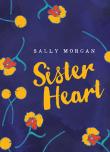 Image courtesy of publisher's website.See full AustLit entry
Image courtesy of publisher's website.See full AustLit entry'A young Aboriginal girl is taken from the north of Australia and sent to an institution in the distant south. There, she slowly makes a new life for herself and, in the face of tragedy, finds strength in new friendships. Poignantly told from the child’s perspective, Sister Heart affirms the power of family and kinship.' (Publication summary)
(...more)Q. What was Sally Morgan's first (and possibly most famous) book?
Q. Name some other famous authors in Sally Morgan’s family. How are they related to her?
-
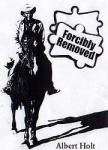 Image courtesy of Magabala Books'... Forcibly Removed is a personal story told with humour and a confidence that comes from experience and achievement. It reveals the journey of a spirited family who maintained their dignity and fought to survive while living on Cherbourg Mission, Queensland, in the mid-20th century.' (Backcover). (...more)See full AustLit entry
Image courtesy of Magabala Books'... Forcibly Removed is a personal story told with humour and a confidence that comes from experience and achievement. It reveals the journey of a spirited family who maintained their dignity and fought to survive while living on Cherbourg Mission, Queensland, in the mid-20th century.' (Backcover). (...more)See full AustLit entryQ. Click on one of the ‘subject links’ and see if you can find other stories related to Uncle Albert’s book. Name that book and tell us a little about the subject.
-
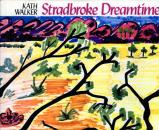 This image has been sourced from online.Stradbroke Dreamtime 'presents two aspects of Oodgeroo's life. Part one, 'Stories from Stradbroke', describes episodes from Oodgeroo's childhood in Australian society and an impression of her family's Aboriginal heritage. Part two, 'Stories from the Old and New Dreamtime', is made up of traditional Aboriginal lore which Oodgeroo heard as a child.' Publisher's blurb (...more)See full AustLit entry
This image has been sourced from online.Stradbroke Dreamtime 'presents two aspects of Oodgeroo's life. Part one, 'Stories from Stradbroke', describes episodes from Oodgeroo's childhood in Australian society and an impression of her family's Aboriginal heritage. Part two, 'Stories from the Old and New Dreamtime', is made up of traditional Aboriginal lore which Oodgeroo heard as a child.' Publisher's blurb (...more)See full AustLit entryQ. This author has two names, what are they? What does her Aboriginal name mean and can you find her dad’s totem in the records? Hint: it might be in an adaptation of one of her books.
-
 This image has been sourced from WebSee full AustLit entry
This image has been sourced from WebSee full AustLit entry'These poems pulse with the language and images of a mangrove-lined river city, the beckoning highway, the just-glimpsed muse, the tug of childhood and restless ancestors. For the first time Samuel Wagan Watson's poetry has been collected into this stunning volume, which includes a final section of all new work.' (Source: UQP website: www.uqp.uq.edu.au)
(...more)Q. Name the major award that this author won for his first collection of poetry. What is that award for? If you click on the link, who else has won that award?
You might be interested in...


